
Ko-what-i?
Want to know more about the kowari? Find out the facts here!
What is a kowari?
The kowari (Dasyuroides byrnei) is a small (70-175g) marsupial carnivore most notable for a large brush of dense black furs on its graceful tail. Kowari have sandy-grey fur and darker guard hairs above, with pale grey to white furs below. As a member of the Dasyuridae family, kowari are related to the more well-known Tasmanian Devil and Quoll species.
Where do they live?
Kowari live in stony desert landscapes and sparsely vegetated gibber pavements. Within these landscapes, kowari make burrows in wind-swept sand mounds. Though they once occured in the Northern Territory, kowari are now restricted to refuge populations in north-east South Australia and south-west Queensland.
What do they eat?
The kowari is a fierce predator which hunts opportunistically for a range of invertebrates, small mammals, reptiles, and even birds and their eggs! Interestingly, kowari do not need to drink water as they obtain sufficient moisture through their diet.
What are the major threats to the kowari?
Several factors are suspected to have contributed to their decline: high levels of sheep and cattle which may trample burrow systems while grazing, introduced predators such as cats and foxes, and introduced competitors such as rabbits are a few key threats. It is likely that the causes of ongoing declines are multifaceted.
Who discovered the kowari?
The kowari was described to Western science by Sir Walter Baldwin Spencer in 1896, however the original specimens were collected by local Aboriginal people. Prior to European colonisation, the kowari was known to the Aboriginal peoples of central Australia, including but not limited to the Ngamini, Diyari, and Wongkanguru people.
What are its future prospects?
The kowari was recently up-listed from Vulnerable to Endangered under Federal legislation. With your help, we believe we can secure a future for the kowari to thrive for generations to come.
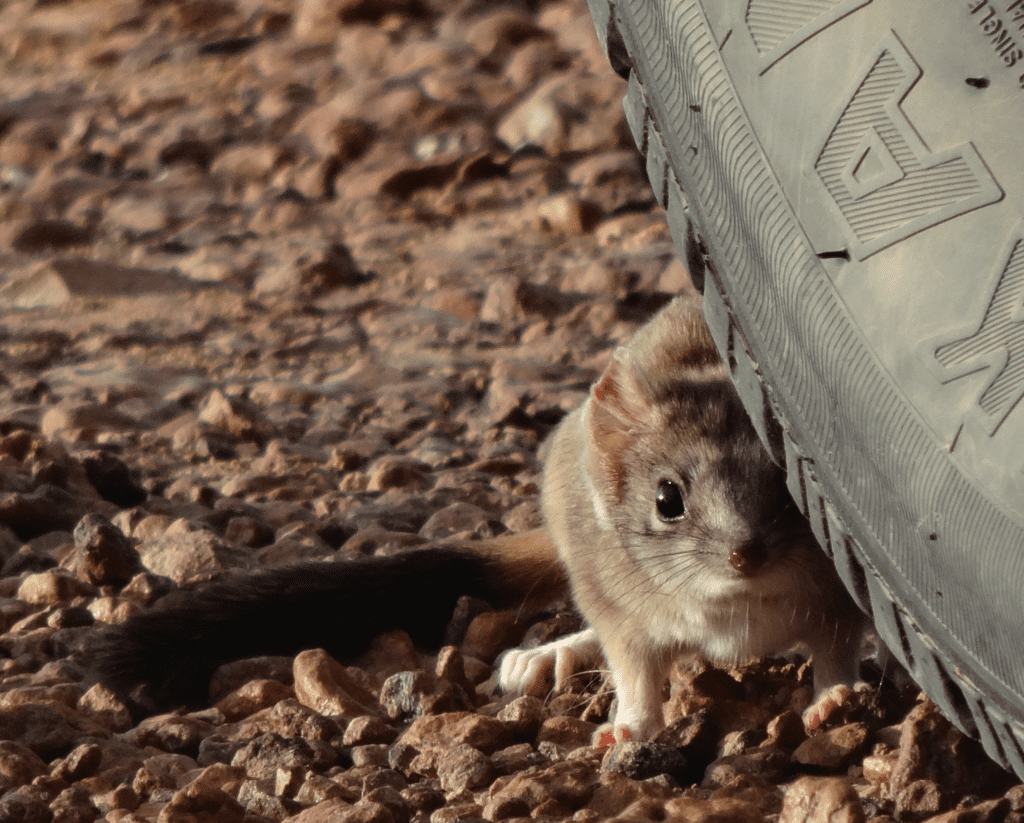
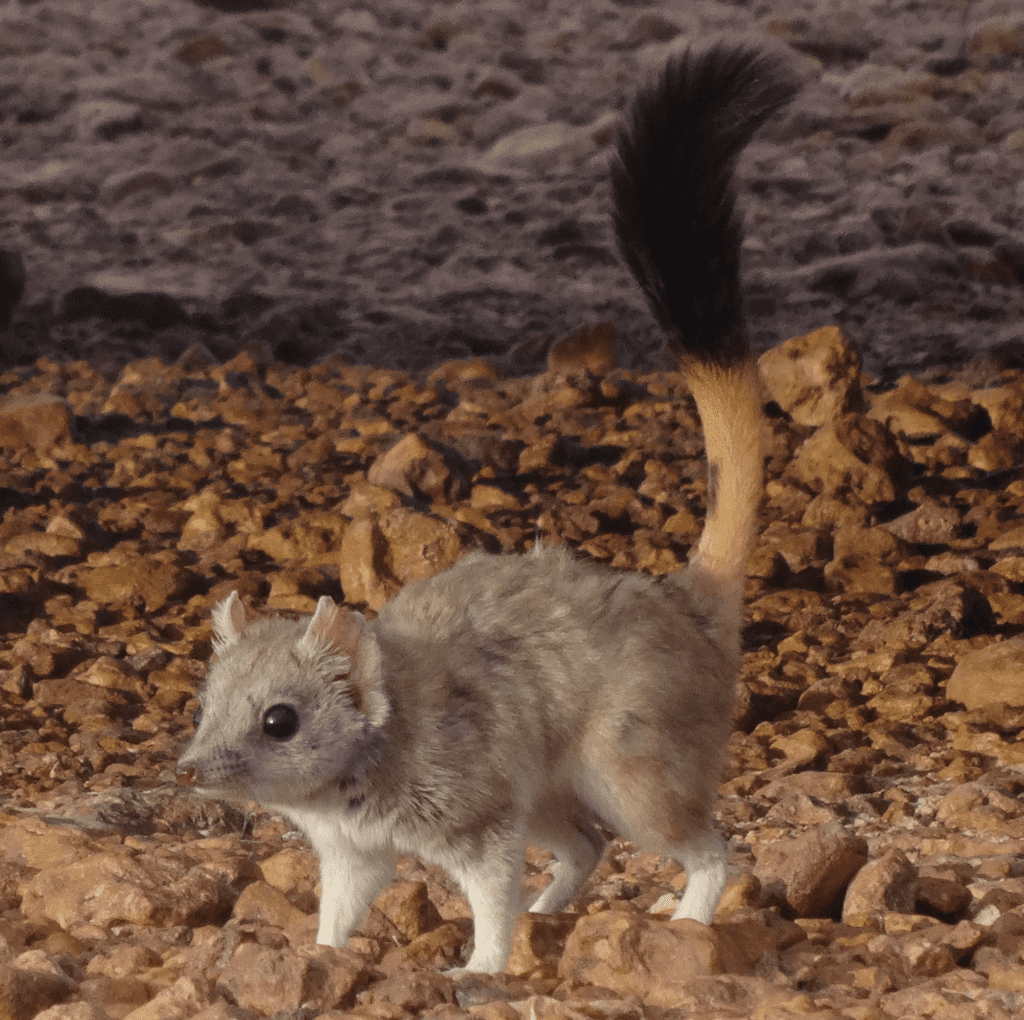
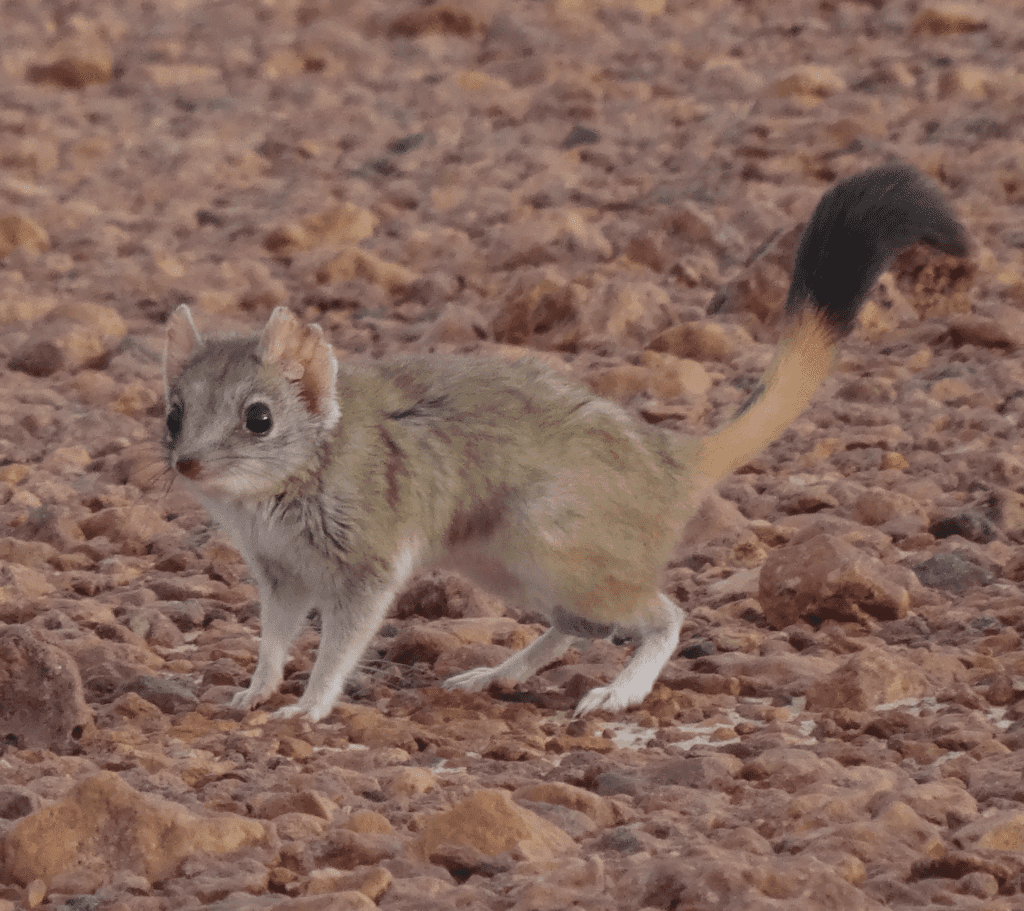
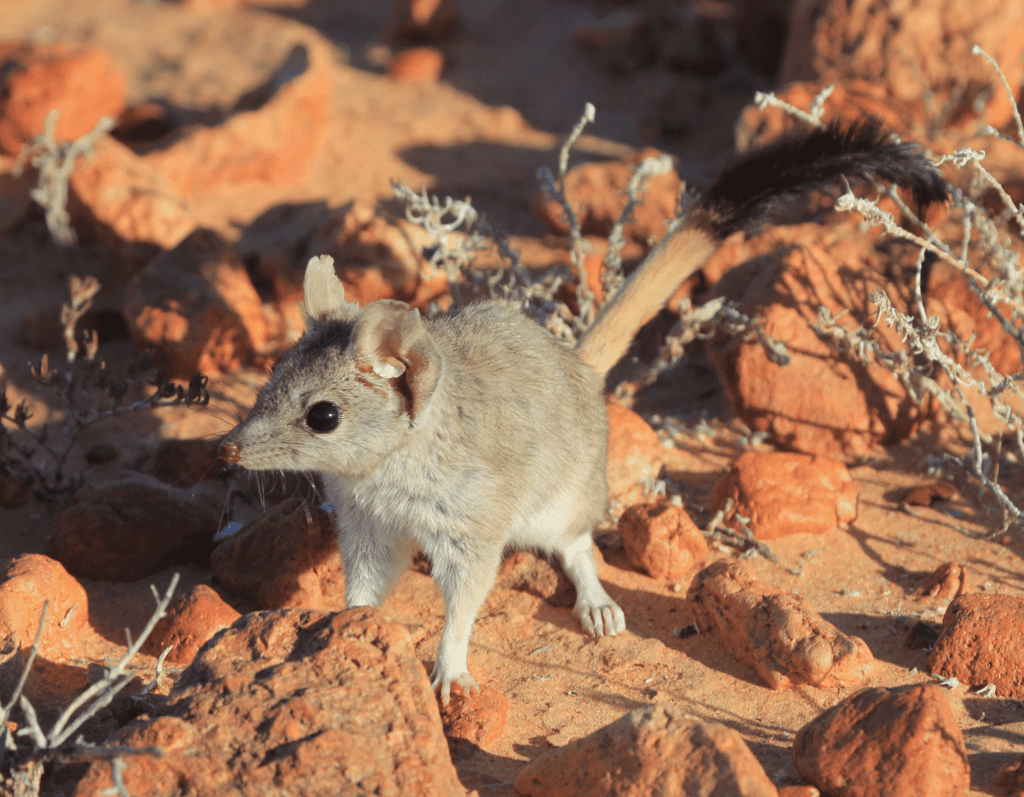
Habitat, threats, and decline
Gibber country
Nearly as fascinating as the kowari itself is the environment in which it resides. The term ‘gibber country’ or ‘gibber plains’ is used to describe the desert pavement present in Sturt’s Stony Desert and other desert rangelands. These “polished gibbers” are closely-packed and interlocking rock fragments which form a surface the kowari appears well adapted to navigate.
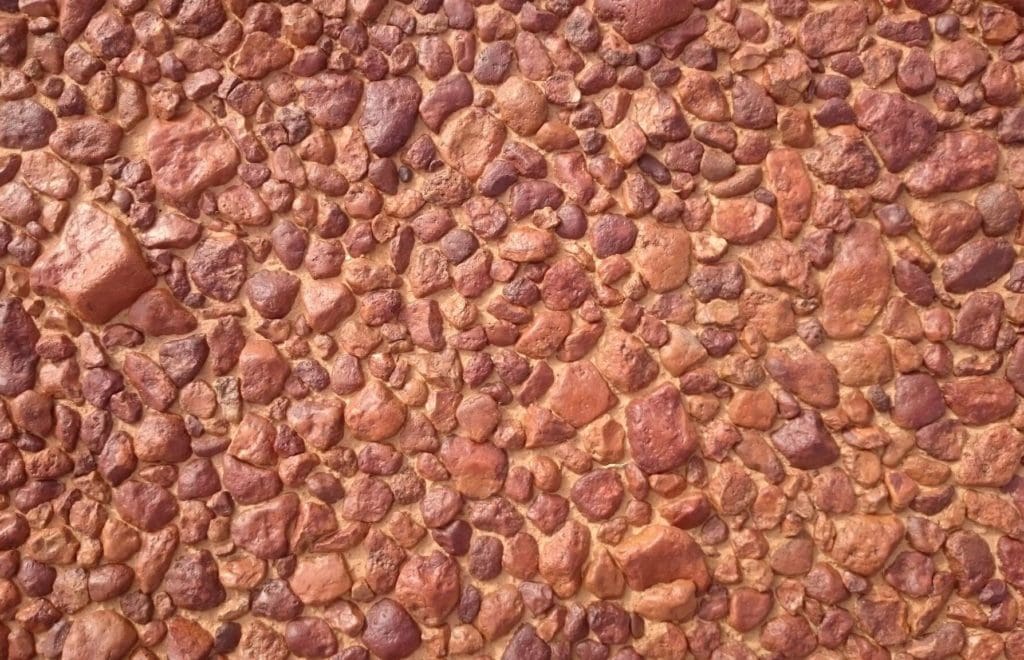
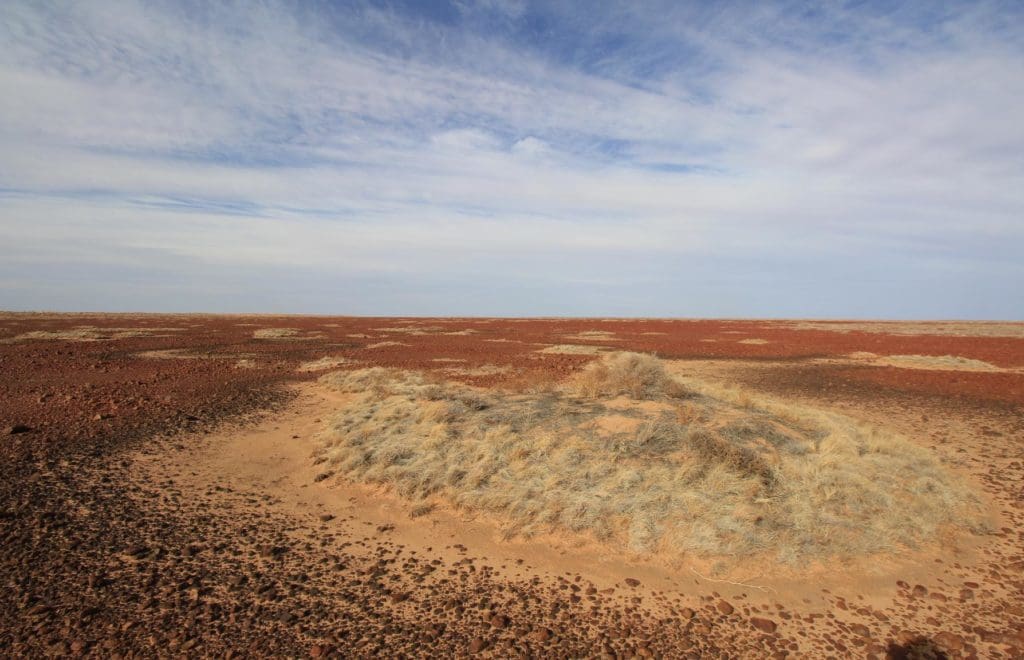
REFUGE ISLANDS
To avoid the harsh desert sun, the kowari makes burrows in the wind-swept sand mounds scattered across the gibber pavement. These same sand mounds are hot spots of biodiversity and provide ample opportunities for the kowari to hunt once night falls. It is thought that the kowari may play the role of a keystone predator in this gibber plain ecosystem.
RANGE CONTRACTION
Even conservative estimates of the historical range for the kowari – as shown here – depict a significant contraction since European colonisation. The introduction of cattle and sheep grazing, as well as introduced predators and competitors (cats, foxes, rabbits), has caused the extinction of Northern Territory populations and the ongoing decline of South Australian and Queensland strongholds.
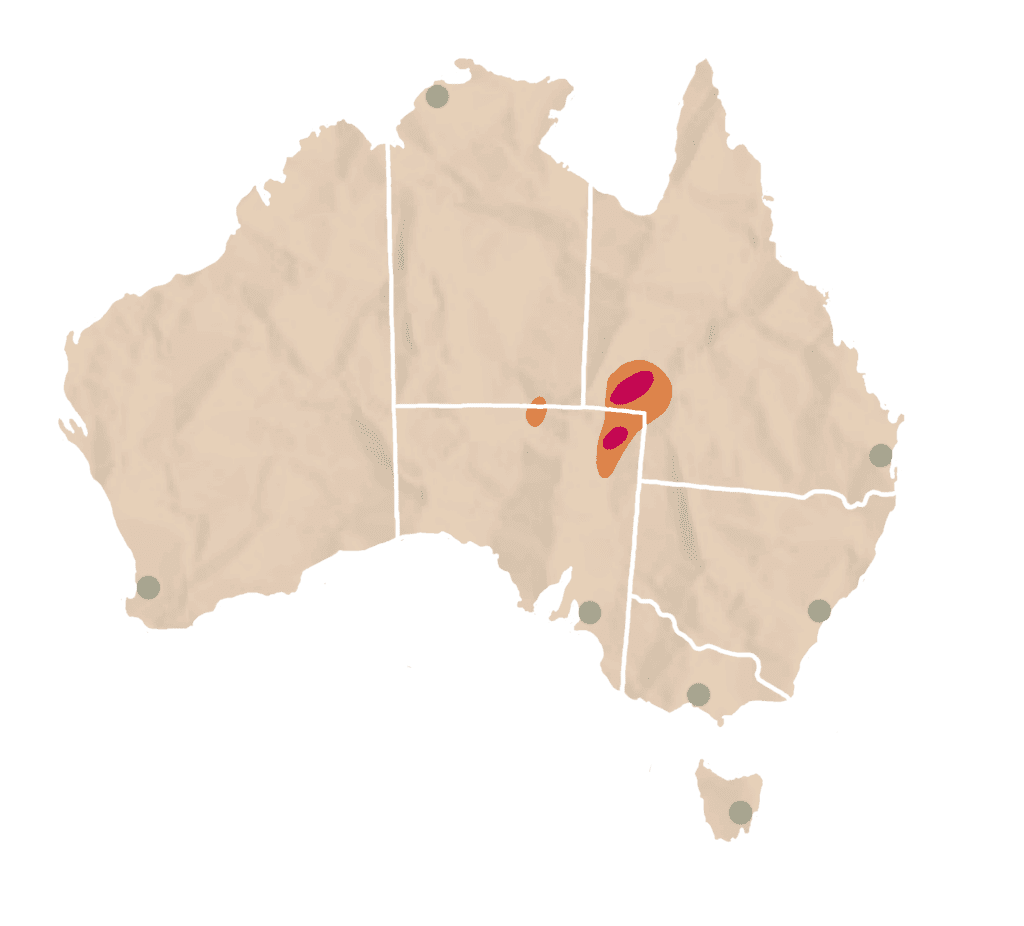

REsearch
Recent research has revealed the ongoing decline of stronghold populations in South Australia. This figure from Greenville et al. (2018) shows the decline in kowari captures at two major sites between 2000 and 2015. Our proposed research aims to provide land managers with the information necessary to inform conservation management plans.

Team Kowari
